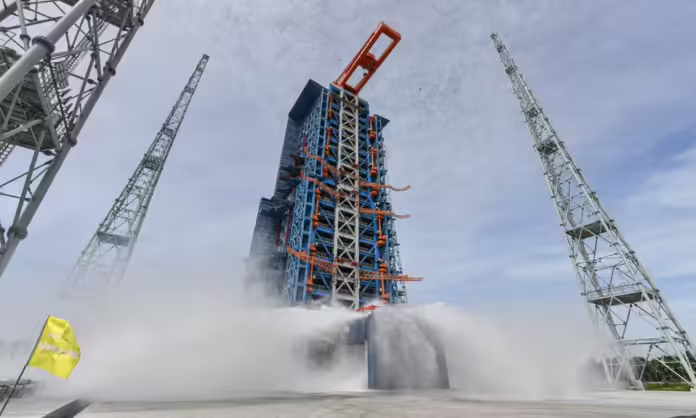According to Space Pioneer, the first phase of its Tianlong-3 was launched during testing but fell in the hills close to the city of Gongyi due to a “structural failure.”
A Chinese private company’s space rocket misfired during a test, causing it to fall and burst into flames on Sunday close to a city.
A structural failure at the connection between the rocket and the test stand caused the Tianlong-3 rocket’s first stage to escape its launch pad, according to a statement released by Beijing Tianbing, a.k.a. Space Pioneer, on its official WeChat account. According to reports, the rocket touched down in a hilly part of the central Chinese city of Gongyi.
Also Read New Criminal Laws Take Effect, Superseding British-Era IPC: Important Key!
Video footage from the incident published by Chinese digital media outlet The Paper showed the rocket soaring straight up into the air before losing power and turning horizontally, falling back down to earth and exploding into flames on nearby forested hills.
An initial investigation of the unplanned flight found there were no reports of casualties, it said.
Also Read Telangana Junior Colleges will reopen for the school year 2024–2025 on June 1!
Parts of the rocket stage were scattered within a “safe area” but caused a local fire, according to a separate statement from the Gongyi emergency management bureau.
The fire has since been extinguished and no one was hurt, the bureau said.
The two-stage Tianlong-3, “Sky Dragon 3”, is a partly reusable rocket under development by Space Pioneer, one of a small group of private-sector rocket makers that have grown rapidly over the past five years.
Falling rocket debris in China after launches is not unheard of, but it is very rare for part of a rocket under development to make an unplanned flight out of its test site and crash.
According to Space Pioneer, the first stage of the Tianlong-3 ignited normally during a hot test but later detached from the test bench due to structural failure.
A rocket can consist of several stages, with the first, or lowest, stage igniting and propelling the rocket upwards upon its launch. When the fuel is exhausted, the first stage falls off, and the second stage ignites, keeping the rocket in propulsion.
Space Pioneer says the performance of Tianlong-3 is comparable to SpaceX’s Falcon 9, which is also a two-stage rocket.
In April 2023, Space Pioneer launched a kerosene-oxygen rocket, the Tianlong-2, becoming the first private Chinese firm to send a liquid-propellant rocket into space.
Chinese commercial space companies have rushed into the sector since 2014 when private investment in the industry was allowed by the state.
Many started making satellites while others including Space Pioneer, focused on developing reusable rockets that can significantly cut mission costs.
The test sites of such companies can be found along China’s coastal areas, located by the sea due to safety reasons. But some are also sited deep in the country’s interior such as Space Pioneer’s test centre in Gongyi, a city of 800,000 people in the central province of Henan.
Stay Connected With us: Siasatpro.com



Recent Comments